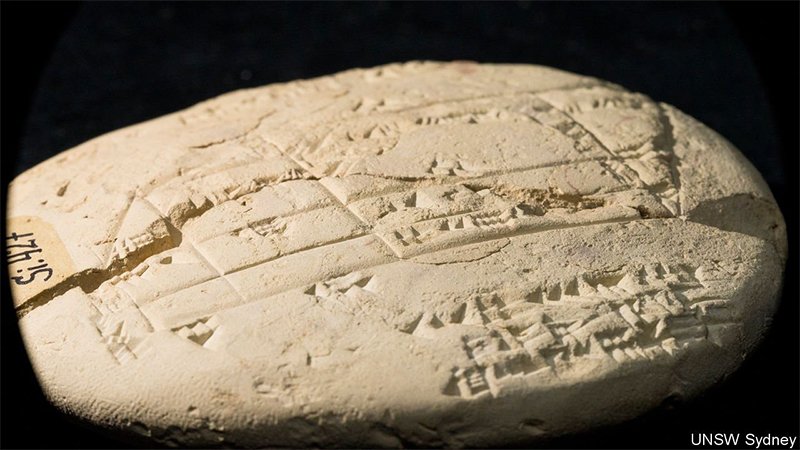Pythagorean principles even before Pythagoras gave them. Analysis of Si.427, a 3,700-year-old Babylonian clay tablet indicates that applied mathematics was used to survey land and measure its boundaries with extreme precision.
The new revelation was done by Daniel F Mansfield of the School of Mathematics and Statistics at the University of New South Wales, who studied Si.427 that dates from the Old Babylonian period between 1900 and 1600 BCE. The table is part of Plimpton 322, the most sophisticated and interesting mathematical object from antiquity.
The tablet was discovered in 1894 by French archaeologist Vincent Scheil at Sippar, the site of an ancient Near Eastern Sumerian and later Babylonian city in today’s Iraq. “Si.427 is one of the most complete examples of applied geometry from the ancient world,” Daniel F Mansfield said.
The mathematician in a paper published in the journal Foundations of Science states that Mesopotamian mathematics is fundamentally about lists. “Numerical calculations in administration, engineering, and surveying were performed by trained professionals, called scribes, whose understanding of mathematics was founded in lists,” he said.
The mathematician found that Si.427 was used to survey a piece of land for the purpose of selling and with its characteristic wedge-shaped indentations, the tablet describes a field containing marshy areas. Mansfield also provides an analysis of a table of rectangles with information about which sides are regular and which sides are not, indicating that there was some contemporary interest in rectangles with regular sides in Mesopotamian mathematics.
These tables were used by surveyors to measure fields, which were divided into shapes that are approximately rectangles, right trapezoids, and right triangles. The rectangles indicated a field of unequal size and suggest that these surveyors had devised a way to make perpendicular lines using Pythagorean triples. The tablets show that unlike earlier field plans found from the period, these measurements were made with unusually high precision.
Si.427 contains three Pythagorean triples: 3, 4, 5; 8, 15, 17; and 5, 12, 13.
The three whole numbers represent right-angle triangles as the sum of the squares of the first two equals the square of the third: 32 + 42 = 52.
Pythagoras found out that for a right angle triangle (with one of the angles being 90 degrees), the square of the hypotenuse is equal to the sum of the squares of the other two sides: a2+b2=c2. The Pythagoras principles were a watershed moment in mathematics that was defined in the 6th century BC, over 1,000 years after the markings on the Si.427 tablet.
Mansfield found that Plimpton 322 is a study of rectangles and that its author systematically generated as many as 38 rectangles.
“It could have been motivated by a particular practical need, or by a purely theoretical interest in geometry,” he concluded.
























